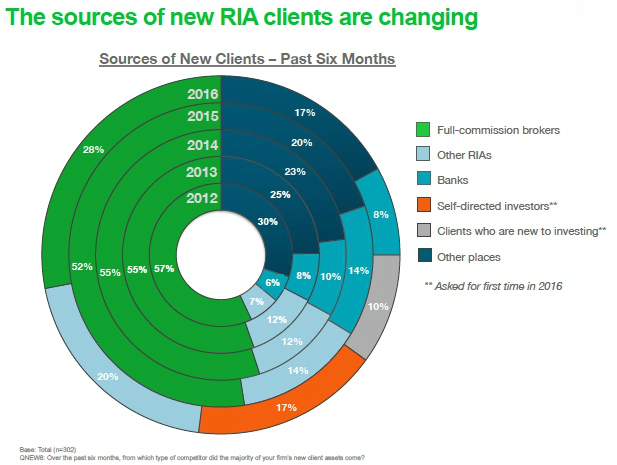Registered investment advisory firms had a robust year in 2015, with many not only boosting their bottom line and assets under management, but acquiring new clients from new and different channels.
According to TD Ameritrade Institutional 2016 RIA Sentiment Survey released Wednesday, RIAs reported growing their number of new clients last year by 13 percent on average. And half anticipate their firms will grow even faster during 2016.
“RIAs should keep doing what they do best: deliver objective, comprehensive, personalized advice to clients. We also expect advisors will continue investing in technology that can help them scale and streamline low-value activities, so that they can bring even more value to clients by strengthening relationships and enhancing service,” Tom Nally, president of TD Ameritrade Institutional, said in a statement.
Overall, about 63 percent of advisors added clients in the second half of 2015, according to the over 300 RIAs that responded to TD’s annual survey. But where RIAs are gaining clients is changing, the report found. In previous years, an overwhelming majority of new clients were switching over from full-commission brokers. But this year, the number of clients coming over from other RIAs is growing—up 6 percentage points over last year.

Looking into 2016, more than half of RIAs say they plan to target new client niches this year. About 47 percent expect to spend more on marketing and advertising, both with an eye toward fueling new client growth in clients and assets.
The custodian fielded its annual survey between November and December 2015 to RIAs that custody with TD Ameritrade, as well as independent firms that not affiliated. The telephone survey received 302 reposes from RIAs who manage an average of $265 million in assets.




